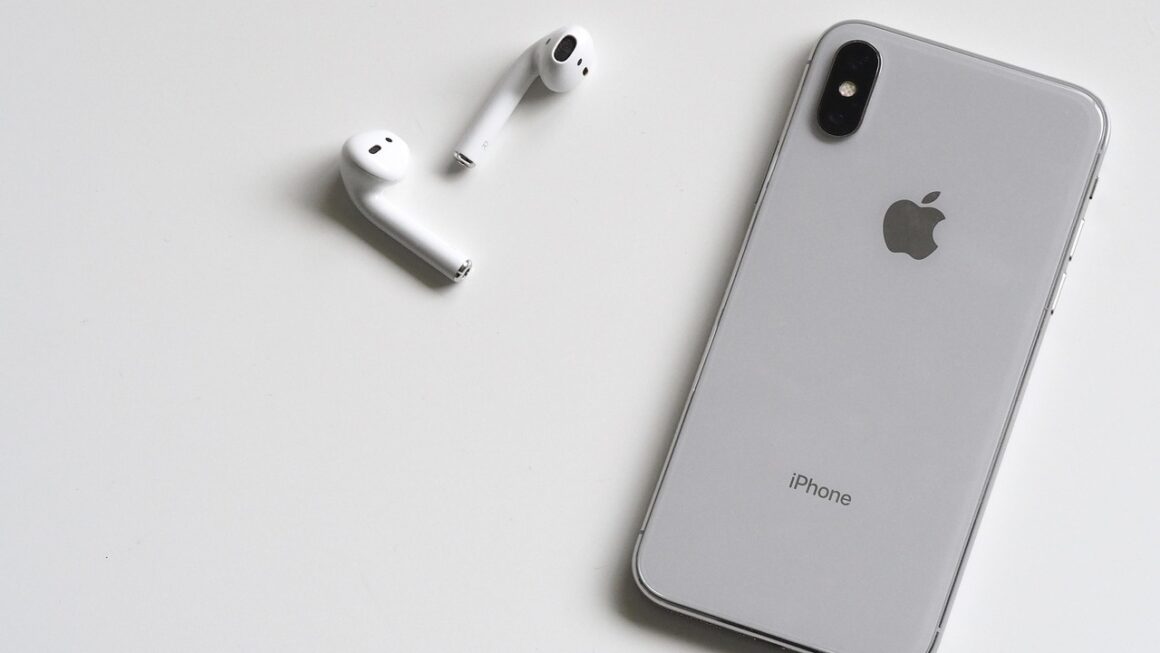Photography is more than just pointing and shooting. It’s about capturing a moment, telling a story, and expressing your unique vision. While a great camera is essential, the right camera accessories can elevate your photography from good to extraordinary, opening up a world of creative possibilities and helping you achieve professional-quality results. From stabilizing your shots to enhancing your lighting and protecting your gear, investing in the right accessories is an investment in your photography journey. Let’s dive into some essential camera accessories that every photographer should consider.
Essential Camera Accessories for Every Photographer
Tripods: Stability for Sharp Images
A tripod is arguably one of the most crucial accessories for any photographer, regardless of skill level. It provides stability, which is essential for sharp images, especially in low-light conditions or when using long exposures.
- Why Use a Tripod?
Sharpness: Prevents camera shake, resulting in clearer, sharper photos.
Low-Light Photography: Allows for longer shutter speeds without blur, crucial for capturing detail in dim environments.
Landscape Photography: Enables precise composition and level horizons.
Time-Lapse Photography: Essential for creating smooth time-lapse videos.
Self-Portraits & Group Shots: Frees you up to be in the picture.
- Types of Tripods:
Aluminum Tripods: Affordable and durable, suitable for general use.
Carbon Fiber Tripods: Lighter and more vibration-resistant than aluminum, ideal for travel and professional use.
Travel Tripods: Compact and lightweight, designed for portability.
Tabletop Tripods: Small and convenient for tabletop photography or when space is limited.
- Choosing the Right Tripod:
Weight Capacity: Ensure the tripod can support the weight of your camera and lens.
Height: Choose a tripod that reaches your eye level for comfortable shooting.
Stability: Look for a sturdy tripod with a wide base.
Portability: Consider the weight and folded length if you plan to travel with it.
Head Type: Ball heads offer flexibility and quick adjustments, while pan-tilt heads provide precise control for video.
Lenses: Expanding Your Creative Vision
Different lenses allow you to capture different perspectives and styles of photographs. Investing in a selection of lenses can dramatically improve your photography.
- Prime Lenses vs. Zoom Lenses:
Prime Lenses: Have a fixed focal length, often offering superior image quality and wider apertures for better low-light performance and shallow depth of field. Examples include 35mm, 50mm, and 85mm lenses. They are great for portraits, street photography, and general use.
Zoom Lenses: Offer a range of focal lengths, providing versatility for different shooting situations. Examples include 24-70mm, 70-200mm, and wide-angle zoom lenses. They are useful for landscapes, wildlife, and events.
- Lens Filters:
UV Filters: Protect the front element of your lens from scratches and dust. Some may reduce UV haze, but this is less important with modern lenses.
Polarizing Filters: Reduce glare and reflections, enhance colors, and darken skies. Essential for landscape photography.
Neutral Density (ND) Filters: Reduce the amount of light entering the lens, allowing for longer exposures in bright conditions or wider apertures for shallow depth of field.
Graduated Neutral Density (GND) Filters: Darken specific areas of the scene, such as the sky, to balance exposure.
- Practical Examples:
A 50mm f/1.8 lens is an affordable and versatile prime lens perfect for portraits and everyday photography.
A 24-70mm f/2.8 lens is a standard zoom lens ideal for professional photographers covering various events and shooting conditions.
A polarizing filter can transform a bland landscape photo into a vibrant and captivating image.
Lighting Equipment: Mastering the Light
Understanding and controlling light is fundamental to photography. External lighting equipment allows you to shape and manipulate light to create the desired effect.
- External Flashes (Speedlights):
Why Use an External Flash? Provides more power and flexibility than the built-in flash, allowing you to control the direction and intensity of light. Eliminates red-eye and creates more natural-looking portraits.
Features to Look For: TTL (Through-The-Lens) metering for automatic exposure, manual mode for precise control, high-speed sync for shooting with fast shutter speeds, and wireless triggering capabilities.
- Studio Strobes:
Ideal for: Studio photography, portraits, and product photography. Offer more power and consistent light output than speedlights.
Key Considerations: Watt-seconds (power output), recycle time, and compatibility with light modifiers.
- Light Modifiers:
Softboxes: Create soft, diffused light, perfect for portraits.
Umbrellas: More portable than softboxes, also provide soft light.
Reflectors: Bounce light onto your subject, filling in shadows and adding highlights.
Beauty Dishes: Create a focused, specular light with a soft edge, often used for beauty and fashion photography.
- Actionable Takeaway: Experiment with different lighting setups to understand how light affects your images. Practice using reflectors and diffusers to control shadows and highlights.
Camera Bags and Cases: Protecting Your Investment
Protecting your valuable camera gear is essential, especially when traveling or shooting outdoors. A good camera bag or case will keep your equipment safe from bumps, scratches, and the elements.
- Types of Camera Bags:
Backpacks: Offer the most storage space and weight distribution, ideal for carrying a lot of gear.
Shoulder Bags: Convenient for quick access to your camera and lenses.
Sling Bags: A hybrid between backpacks and shoulder bags, offering both portability and accessibility.
Rolling Bags: Suitable for transporting heavy gear over smooth surfaces.
- Key Features to Consider:
Padding: Provides protection against impacts.
Water Resistance: Protects your gear from rain and moisture.
Compartments: Allow for organized storage of your camera, lenses, and accessories.
Comfort: Adjustable straps and breathable materials ensure comfortable carrying.
Size: Choose a bag that fits your gear and your needs.
- Hard Cases:
Ideal for: Air travel and extreme conditions. Offer maximum protection against impacts, water, and dust.
Brands: Pelican, SKB, and Nanuk are popular brands known for their durability and reliability.
- Example: A photographer traveling to a rainforest might choose a waterproof backpack with padded compartments for their camera, lenses, and other accessories. A studio photographer might opt for a rolling hard case to transport their strobes, light modifiers, and camera equipment.
Memory Cards and Storage: Capturing and Preserving Your Work
Reliable storage solutions are essential for photographers to capture and preserve their work. Choosing the right memory cards and storage devices ensures you don’t miss a shot and that your images are safe and accessible.
Memory Cards
- Types of Memory Cards:
SD Cards: The most common type of memory card used in cameras.
CompactFlash (CF) Cards: Larger and faster than SD cards, often used in professional cameras.
CFast Cards: Even faster than CF cards, designed for high-resolution video recording.
XQD Cards: High-performance cards used in some Nikon and Sony cameras.
- Key Considerations:
Capacity: Choose a capacity that suits your shooting style and resolution. Consider how many photos or videos you will shoot per session and select a card size that fits your needs.
Speed: Look for cards with fast read and write speeds to minimize buffer times and enable continuous shooting. The speed class or UHS rating indicates the card’s minimum write speed.
Reliability: Choose reputable brands known for their quality and durability.
- Pro-Tip: Always carry multiple memory cards to avoid running out of space and to protect against data loss in case one card fails.
External Hard Drives
- Importance of Backups:
Data Security: Back up your photos regularly to protect against hard drive failures, theft, or accidental deletion.
Multiple Backups: Implement the 3-2-1 backup rule: keep three copies of your data, on two different media, with one copy stored offsite.
- Types of External Hard Drives:
HDDs (Hard Disk Drives): Affordable and offer high storage capacity.
SSDs (Solid State Drives): Faster and more durable than HDDs, but more expensive.
NAS (Network Attached Storage): Allows you to access your files from multiple devices over a network.
- Cloud Storage:
Services: Consider cloud storage services like Google Drive, Dropbox, or Adobe Creative Cloud for offsite backups and easy access to your files from anywhere.
- Pro-Tip: Use a dedicated backup software to automate the backup process and ensure your photos are regularly backed up.
Cleaning and Maintenance: Keeping Your Gear in Top Condition
Regular cleaning and maintenance are essential for prolonging the life of your camera gear and ensuring optimal performance.
Cleaning Supplies
- Microfiber Cloths:
Purpose: Used to clean lenses, camera bodies, and screens without scratching.
Tip: Use a dedicated microfiber cloth for lenses to avoid transferring dirt or oil from other surfaces.
- Lens Cleaning Solution:
Use: Apply sparingly to a microfiber cloth to remove fingerprints, smudges, and dust from lenses.
Note: Avoid using harsh chemicals or household cleaners, as they can damage the lens coatings.
- Air Blower:
Purpose: Used to remove dust and debris from lenses, sensors, and camera bodies without touching the surface.
Technique: Hold the blower at a slight angle and use short bursts of air to dislodge particles.
- Sensor Cleaning Swabs:
Use: Used to clean the camera sensor, which is prone to dust accumulation.
Caution: Use sensor cleaning swabs with caution and follow the manufacturer’s instructions carefully to avoid damaging the sensor.
Maintenance Tips
- Regular Cleaning:
Frequency: Clean your camera and lenses regularly, especially after shooting in dusty or sandy environments.
Steps: Start by using an air blower to remove loose particles, then gently wipe the surfaces with a microfiber cloth and lens cleaning solution if needed.
- Storage:
Environment: Store your camera gear in a cool, dry place away from direct sunlight and humidity.
Protection: Use camera bags or cases to protect your equipment from dust, scratches, and impacts.
- Battery Care:
Storage: Remove batteries from your camera when storing it for extended periods.
Charging: Follow the manufacturer’s recommendations for charging and storing batteries to prolong their lifespan.
- Professional Servicing:
Frequency: Consider having your camera and lenses professionally serviced every few years to ensure optimal performance and address any potential issues.
Conclusion
Investing in camera accessories is a smart move for any photographer looking to enhance their skills and capture stunning images. From tripods and lenses to lighting equipment and storage solutions, the right accessories can make a significant difference in the quality and creativity of your work. By understanding the importance of each accessory and choosing the right ones for your needs, you can take your photography to the next level. So, explore the possibilities, experiment with different tools, and discover how camera accessories can help you realize your photographic vision.




